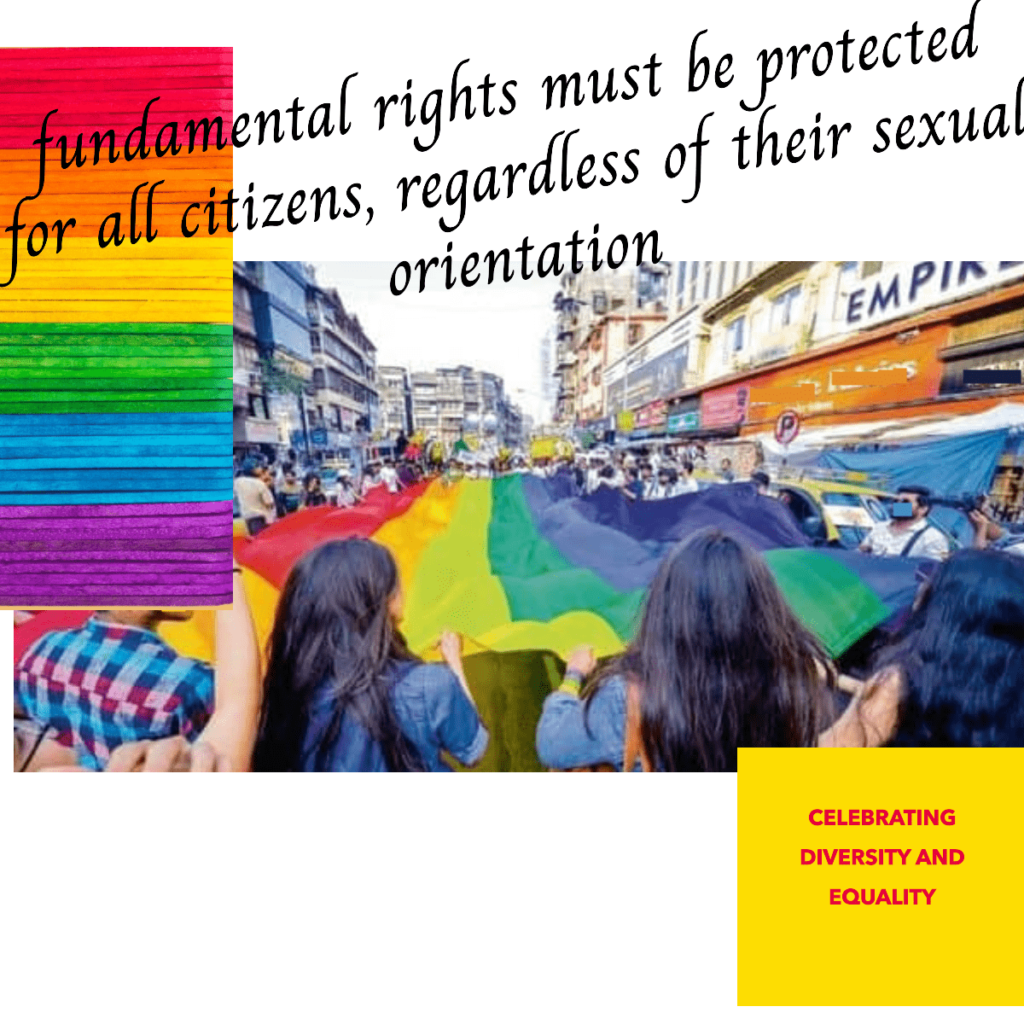
Navtej Singh Johar v. Union of India: In a groundbreaking verdict, the Supreme Court of India delivered a historic judgment in the case of Navtej Singh Johar and Others v. Union of India. Consequently, this pivotal ruling has far-reaching implications for LGBTQ+ rights in the country. So, let’s delve into the details of this landmark decision and understand its significance.
Background of Navtej Singh Johar v. Union of India
On September 6, 2018, a momentous step was taken when the Constitution Bench of the Supreme Court decided to partially strike down Section 377 of the Indian Penal Code (IPC). Consequently, this section, which had previously criminalized consensual same-sex relations and labeled them as “against the order of nature,” underwent a significant change. The judgment was delivered by a bench of five eminent judges. a panel that included Chief Justice Dipak Misra and Justices Khanwilkar, R.F. Nariman, D.Y. Chandrachud, and Indu Malhotra. This marked a pivotal moment in the legal history of LGBTQ+ rights in India, as the Court made a resolute move to challenge the prevailing norms and notions.
Key Takeaways of Navtej Singh Johar and Others v. Union of India Case:
The judges unanimously held that Section 377 of the IPC violated multiple fundamental rights enshrined in the Indian Constitution. These include Article 14 (equality), Article 15(1) (non-discrimination), Article 19(1)(a) (freedom of expression), and Article 21 (right to life and personal liberty).
A Triumph for Equality:
The essence of this judgment lies in the assertion that our Constitution aims to transform society rather than preserving the pre-existing values of the majority. While some sections of Section 377 remain intact, such as those related to sex with minors, non-consensual acts, and bestiality, the ruling has ensured that it will no longer apply to consensual same-sex relations. This is a monumental step in liberating LGBTQ+ individuals from the shadows of discrimination and inequality.
A Journey to Justice :
This journey began in April 2016 when five courageous members of the LGBTQ+ community filed a writ petition in the Supreme Court, challenging the constitutionality of Section 377. They asserted that this provision directly infringed on their fundamental rights. Notably, their claims differed from those in the 2013 case of Koushal v. Naz Foundation, where the Supreme Court upheld the constitutional validity of Section 377.
Initially assigned to a two-judge bench, the case eventually reached the Chief Justice’s bench. Which determined that a constitutional bench should hear it.
The Judgment in Navtej Singh Johar v. Union of India:
In a remarkable departure from its previous stance in Suresh Kumar Kaushal v. Naz Foundation, the Supreme Court declared that all private consensual sexual acts between adults, including homosexual relations, are now legal. The Court deemed the criminalization of such acts arbitrary. Thus establishing a violation of the right to equality guaranteed by the Constitution of India. This path-breaking verdict further affirmed that Section 377 infringed upon the right to freedom of expression and the right to dignity, identity, and privacy of LGBTQ+ individuals under Article 21 of the Constitution.
The Road Ahead:
This judgment represents a significant shift from the Court’s stance in the 2013 case. It reflects a commitment to a more inclusive and egalitarian society. The legal victory is just the beginning, though. While decriminalizing homosexuality is a crucial step, it does not guarantee the complete liberation of the LGBTQ+ community from the shackles of stigma, illiteracy, and economic hardship.
The Court has not only made a landmark decision but has also thrown down the gauntlet, placing the responsibility on the government’s shoulders. They have been challenged to enact laws related to marriage, adoption, education, jobs, and more, all aimed at ensuring the welfare of the LGBTQ+ community. As a result, the question that now lingers is whether the government is prepared to pick up this gauntlet. In light of this. The ball is firmly in their court to usher in a new era of equality and inclusion.
Conclusion:
Navtej Singh Johar and Others v. Union of India stands as a milestone in India’s LGBTQ+ rights movement. It sends a powerful message of equality and inclusivity to society. Emphasizing that fundamental rights must be protected for all citizens, regardless of their sexual orientation.
This judgment is not just about law; it’s about humanity. And it’s about taking steps to embrace & protect the rights of every individual. In the words of Justice Chandrachud, “Civilization can be brutal,” but today, the Supreme Court has atoned for past errors.



Leave a Reply